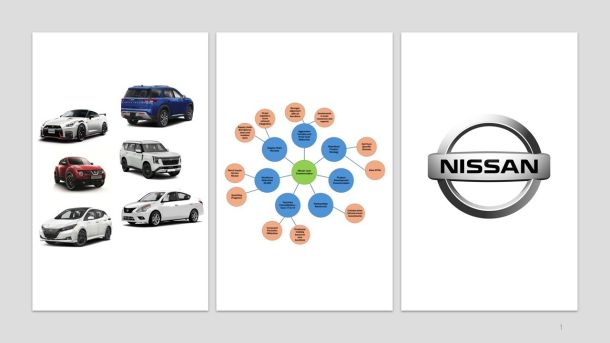Nissan – Possible Strategies or A Single Option?
On December 23rd, the news was all over the world confirming prior rumors. Honda, Mitsubishi and Nissan are in merger talks! The three companies will start to take quick actions to make this alliance a success by working on low hanging fruits of synergies. The successive global wins from Chinese car manufacturers especially in the EV domain were a loud wake up call to the Japanese car industry.
To understand more, we need to know more about the history of Nissan. To know how Nissan ended up in the situation of a “forced strategic option” instead of pursuing one out of many available options, let us highlight some key points and events.
The Nissan Legacy and Journey
Established in 1933, Nissan Motor Co. LLC, headquartered in Yokohama, Japan, has since grown to become a member of the top automotive manufacturers in the world. Having operations in more than 160 countries, the cooperation is well known for its innovation, quality and iconic models like the Nissan Altima, Leaf and Patrol. In recent years, Nissan has established itself as a pioneer in Electric Vehicles (EV) technology, with the Leaf being one of the bestselling EVs in the world. Did the first mover advantage help? A good question to consider.
Numerous significant events has shaped Nissan’s history. After the first Datsun car was made, Nissan began exporting vehicles to over 100 countries in the 1960s. The company’s focus on performance and engineering excellence led to further manufacturing and the creation of the Nissan Skyline, a model that developed an international following. Moving forward, the 2000s Nissan made a significant investment on electric mobility, indicating an initiation towards sustainable transportations.

Regardless of its progressive initiatives, Nissan, like others, has encountered challenges such as financial instability, a declining market share, and leadership conflicts. The company’s partnership with Renault and Mitsubishi has proved essential for international corporation, yet caused conflict, especially when it comes to strategic priorities and leadership dynamics. Considering the speed in which the automotive industry is changing, Nissan’s capability for innovation and adaption is being closely examined.
Nissan Future Vision and Strategic Imperatives
“Empowering Mobility and Beyond”. Nissan’s new ambition 2030 strategy, an extensive plan of action intended to promote sustainable transportations and expedite electric power was revealed in early 2024. The core of this strategy lies in:
Electrification Objectives: By 2030, Nissan plans to launch 27 new electrified models, including 19 fully electric cars.
Technological Innovation: By pledging extended range, faster charging times and lower costs, the company highlighted developments in solid-state battery technology.
Regional Customization: Nissan commits to developing strategies tailored to North America, Europe and Asia-Pacific, recognizing the extensive spectrum of market demands.
Carbon Neutrality: By 2050, the company aims to be carbon neutral across its operations and lifecycle, strategizing in line with global environmental trends.

With a focus on linked car technologies and automated driving features, Nissan revealed increased investment in digital transformation. As a strategy, Nissan is now directly competing with market leaders like Tesla, Toyota and Volkswagen, which is an optimistic response to regulatory requirements and rivalries.
According to its website, Nissan aims to spend $17.6 billion over the next 5 years to achieve these targets, which is a substantial increase compared to prior investments. Partnerships and collaborations will receive a substantial amount in this investment, specifically in areas of battery development and manufacturing. Nissan aims to maintain a competitive market position in the rapidly evolving automotive industry and achieve economies of scale by utilizing its partnership with Renault and Mitsubishi.
So is the New Merger a Strategic U-turn?
Recent publications and actions imply that Nissan may be reevaluating multiple aspects of its Ambition 2030 strategy, raising concerns about a possible strategic U-turn.
A strategy U-turn takes place when a company drastically alters or shifts its strategy in response to internal difficulties, financial strains, or changes in the marketplace. Although they may appear irrational, these actions can be vital for continued existence. We can understand how grave the situation is for a company like Nissan – the fear of not being in the market altogether. Reasons can be traced to the following:
The reality: From shifting EV demand, uncertainty about the future of full EV versus hybrid cars, to supply chain disruptions, the automotive industry is filled with painful question marks. The widespread usage of electric vehicles could be further influenced by the state of the economy in developing markets.
Financial restraints: Given Nissans current financial performance, the vast amount of capital needed to complete full electrification could pose as an added strain on the company’s finances. The P/L should it continue on the same route, will definitely impact the company’s ability to generate value to its shareholders and customers.
Technological challenges: Even though solid-state batteries demonstrate assurance, the technology remains in its early stages, which could jeopardize attempts of mass manufacturing. While this is a debatable point, the Chinese EVs are starting to crack the codes of this challenge.
Competition: Nissan is forced to reconsider its differentiation strategy, simply because rivals like Tesla and BYD have an advantage in EV‘s. Moreover, competition from standard manufacturers adopting hybrid measures, may place pressure on the company to reconsider its strategy. On top of that, my view as an end consumer, many of the recent Nissan models have lost their appeal when compared to alternatives – Chinese cars or others.
Regulatory changes: the importance of Nissans electrification efforts may vary as an outcome of changing government policies, such as delays in the implementation of more severe environmental restrictions. Laws that promote bio, fuels or hybrid cars could possibly have an impact on strategic recalibrations.
Perspectives on Change to the EV industry
A balanced strategy rather than an entire shift suggested by claims of an increased focus on internal combustion engine (ICE) automobiles for emerging countries. Nissan could potentially be able to sustain profitability by implementing this strategic alignment while it gradually shifts to EVs. If confirmed, Nissan’s U-turn could indicate pragmatism, acknowledging current conditions without compromising its long-term goals.

Nissan has also expressed interest in investigating hybrid engines as a solution. This decision is in line with consumer preferences in areas where EVs remain expensive or where there is a lack of sufficient charging facilities. Nissan can continue to be relevant to a wide range of individuals while minimizing the potential risks associated with a concentrated emphasis on EVs by diversifying its product options.
So what are the Future Scenarios?
The latest announcement about the merger with Honda generates multiple scenarios. Out of these, I will highlight three of them.
1. A Japanese Safety Net: The alliance with Honda moves forward and the new company can continue selling Nissan as a standalone brand while benefiting from some synergies. This is not sustainable long term, yet it’s a lifeline.
2. A Strategic Victory: The merger was executed at the right speed and direction giving both companies a more forward from their defensive strategic positions. Both brands claw back at different paces. In a few years, they can pivot again depending on their capabilities, market conditions, Chinese growth performance.
3. Strategy Failure: Honda realizes that the existing challenges in the global car market, Nissan woes and other unforeseen factors (such as unpleasant surprises with USA tariffs) forces the merge to roll back. Honda is focused on defending its brands, re-allocation of resources away from Nissan – the later brand presence continues to shrink. Mitsubishi might take a different direction altogther.
Final Thoughts
China’s impact on global strategies and economies continues to grow. The structure of the automobile industry itself is morphing with high degree of outcomes uncertainty. In China, there is growth of competition like no others, and that is why European car makers are struggling. Defensive strategies are forced strategic options. The main issue with such direction is that they are usually too late. As the future unfolds, we will continue to see how the next four years – aligned with a new USA administration – will unwrap many events that are definite to change the scenarios above.


